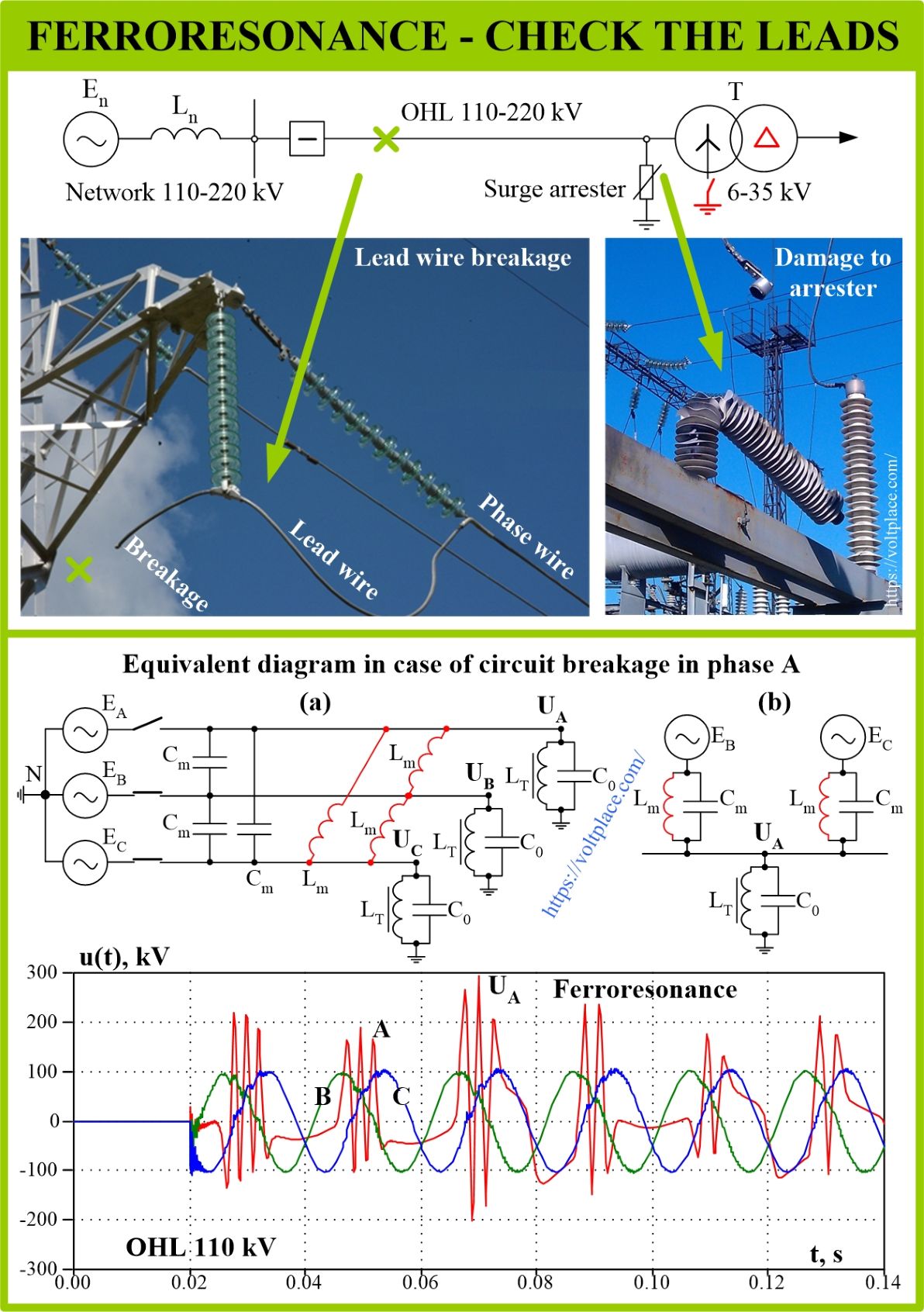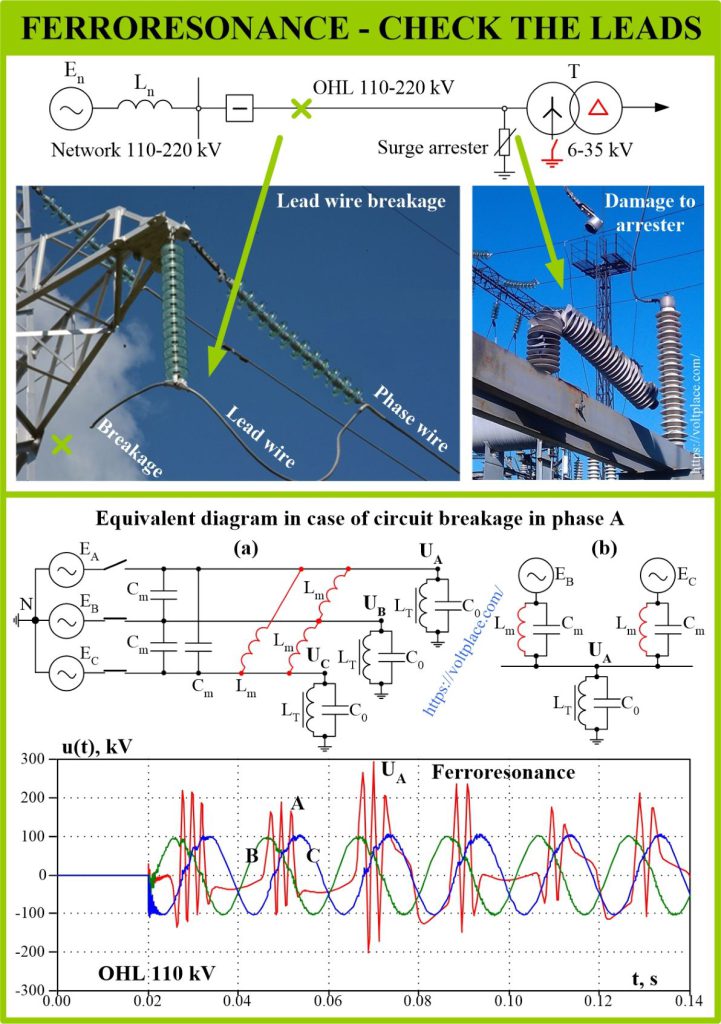
Ferroresonance damages the surge arrester
Let us continue the series of green posts. There is such a thing as “temporary overvoltages” (TOV), and one example of such processes is ferroresonance. Ferroresonance, like ordinary resonance, occurs in circuits containing capacitances and inductances. However, unlike resonance, with ferroresonance, it is important that the inductance does not remain constant, but changes depending on the applied voltage (i.e., it saturates).
Ferroresonance can occur in circuits containing:
✅ Instrumental voltage transformers.
✅ Power transformers and autotransformers.
The first type of ferroresonance is often dangerous primarily for instrumental transformers themselves, whose measuring windings overheat (since they are not designed for high currents of a saturated transformer). However, today let us talk about the second type, which is dangerous, first of all, for surge arresters installed at transformer to protect it from lightning surges.

In 110-220 kV networks, there are many cases where an overhead line (OHL) feeds a dead-end substation with step-down power transformers. Three conditions are needed for the development of ferroresonance there:
1️⃣ The transformer’s neutral (high-voltage side) is ungrounded.
2️⃣ The load is no more than 5-10% of the transformer rated power.
3️⃣ A longitudinal asymmetry appears on the OHL (supply by 1-2 phases).
The occurrence of power supply of such a dead-end substation only by 1-2 phases can be for one of the following reasons:
✅ Failure of one of the phases of the circuit breaker (a rare event, especially considering that, for 110-220 kV classes, the three phases have a common motor drive).
✅ There is a breakage of a lead wire on one of OHL’s towers.
In both cases, in the phase that is disconnected from the network will develop a ferroresonance. At the same time, the length of the OHL (and the length of the disconnected section, between the breakage and the transformer) have little effect on the fact of ferroresonance, although it can affect the form of voltage fluctuations.
The oscillogram shows an example of a phase-to-ground voltages at the terminals of a power transformer when voltage was applied to the OHL 110 kV, but one of the phases (A) turned out to be disconnected. In this phase A, a ferroresonance develops, which quickly damages a surge arrester of the phase A, regardless of its:
➡️ Maximum continuous operating voltage (Umcov).
➡️ Specific energy absorption capability (Wa).
If the neutral of the transformer was grounded, then in addition to the mutual capacitances Cm, mutual inductances Lm (shown in red) would be connected between the phases ABC, and this would bypass the capacitances Cm and eliminate the ferroresonance.
That’s how a small breakage (for example, due to wind loads) of the lead wire on one of many OHL’s towers will end up in damaging the expensive surge arrester on the substation.
The reliability of the network depends on each of us!
